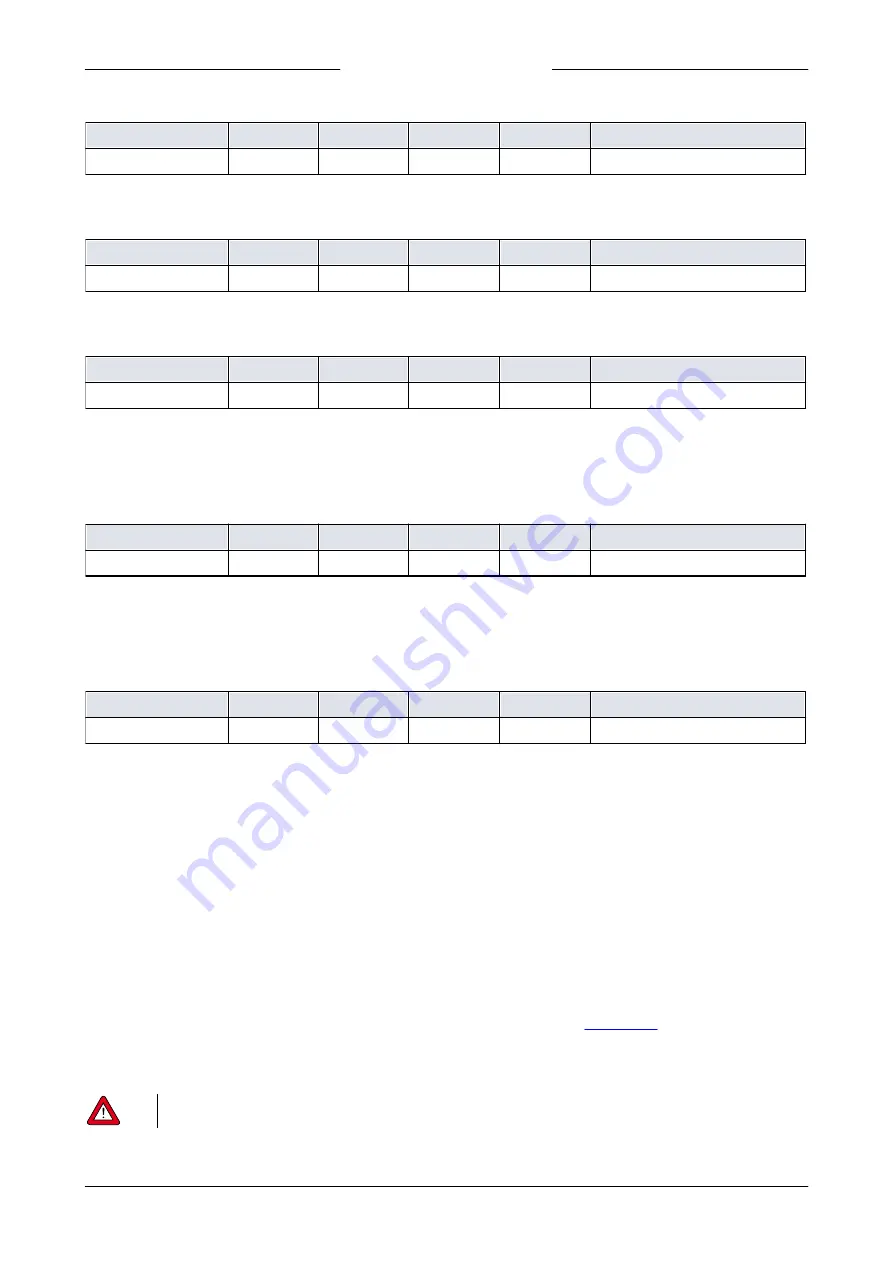
Bronkhorst®
Instruction Manual mini CORI-FLOW™ M1x
9.17.050O
40
PID-Ti
Type
Access
Range
FlowDDE
FLOW-BUS
Modbus
Float
RW
B
0…1E+10
168
114/22
0xF2B0…0xF2B1/62129…62130
PID controller integral action in seconds.
PID-Td
Type
Access
Range
FlowDDE
FLOW-BUS
Modbus
Float
RW
B
0…1E+10
169
114/23
0xF2B8…0xF2B9/62137…62138
PID controller derivative action in seconds. The default value is 0.0.
Open From Zero Response
Type
Access
Range
FlowDDE
FLOW-BUS
Modbus
Unsigned char
RW
B
0…255
165
114/18
0x0E52/3667
Response factor, applied to proportional action when opening the valve from 0%.
·
Default value: 128 (no correction)
·
Other values adjust the controller gain (correction signal) as follows: Controller gain =
Controller Speed
*
PID-Kp
*
1.05
(response factor - 128)
Normal Step Response
Type
Access
Range
FlowDDE
FLOW-BUS
Modbus
Unsigned char
RW
B
0…255
72
114/5
0x0E45/3654
Response factor, applied to proportional action during normal control (at setpoint step).
·
Default value: 128 (no correction)
·
Other values adjust the controller gain (correction signal) as follows: Controller gain =
Controller Speed
*
PID-Kp
*
1.05
(response factor - 128)
Stable Situation Response
Type
Access
Range
FlowDDE
FLOW-BUS
Modbus
Unsigned char
RW
B
0…255
141
114/17
0x0E51/3666
Stable situation response, applied when the controller is stable (within a 2% band around the setpoint).
·
Default value: 128 (no correction)
·
Other values adjust the controller gain (correction signal) as follows: Controller gain =
Controller Speed
*
PID-Kp
*
1.05
(response factor - 128)
4.7
Master/slave configuration (FLOW-BUS)
Normally, there is no communication between the instruments in a fieldbus system. The FLOW-BUS protocol, however,
provides a feature to set up a master/slave relationship between two instruments. The typical behavior of a slave
instrument is to automatically set its own setpoint relative to the output (measurement value) of its master.
The output value of any instrument in a FLOW-BUS network is automatically available to all other instruments without
extra wiring. A slave instrument can also be a master to other instruments.
To setup a master/slave relationship between instruments, first determine which instrument should be the master and
which should be the slave, then set
Control Mode
of the slave instrument to ‘FLOW-BUS Slave’ (value 2) or ‘FLOW-BUS Analog
Slave’ (value 13), depending on how the setpoint should be calculated (see parameter
).
The slave instrument polls the output value of its master periodically and uses the slave factor to set its own flow relative to
the master's.
To prevent damage to the instruments an/or the system(s) they are connected to, be sure to avoid circular references
between devices on the same fieldbus. The FLOW-BUS system does not have a protection mechanism.












































